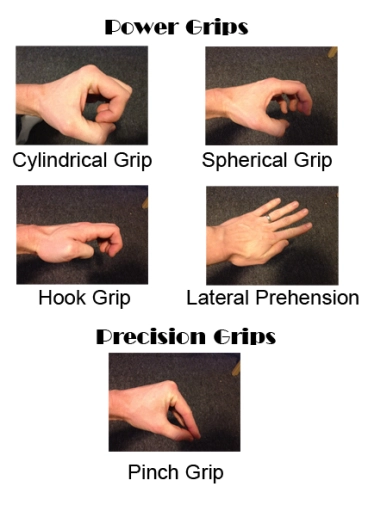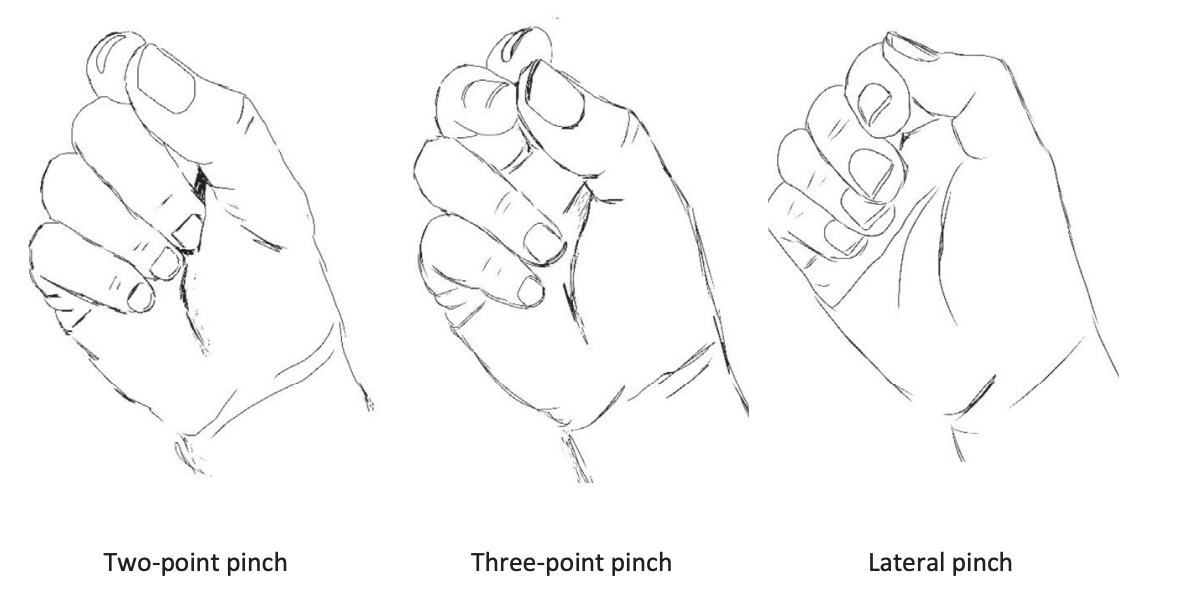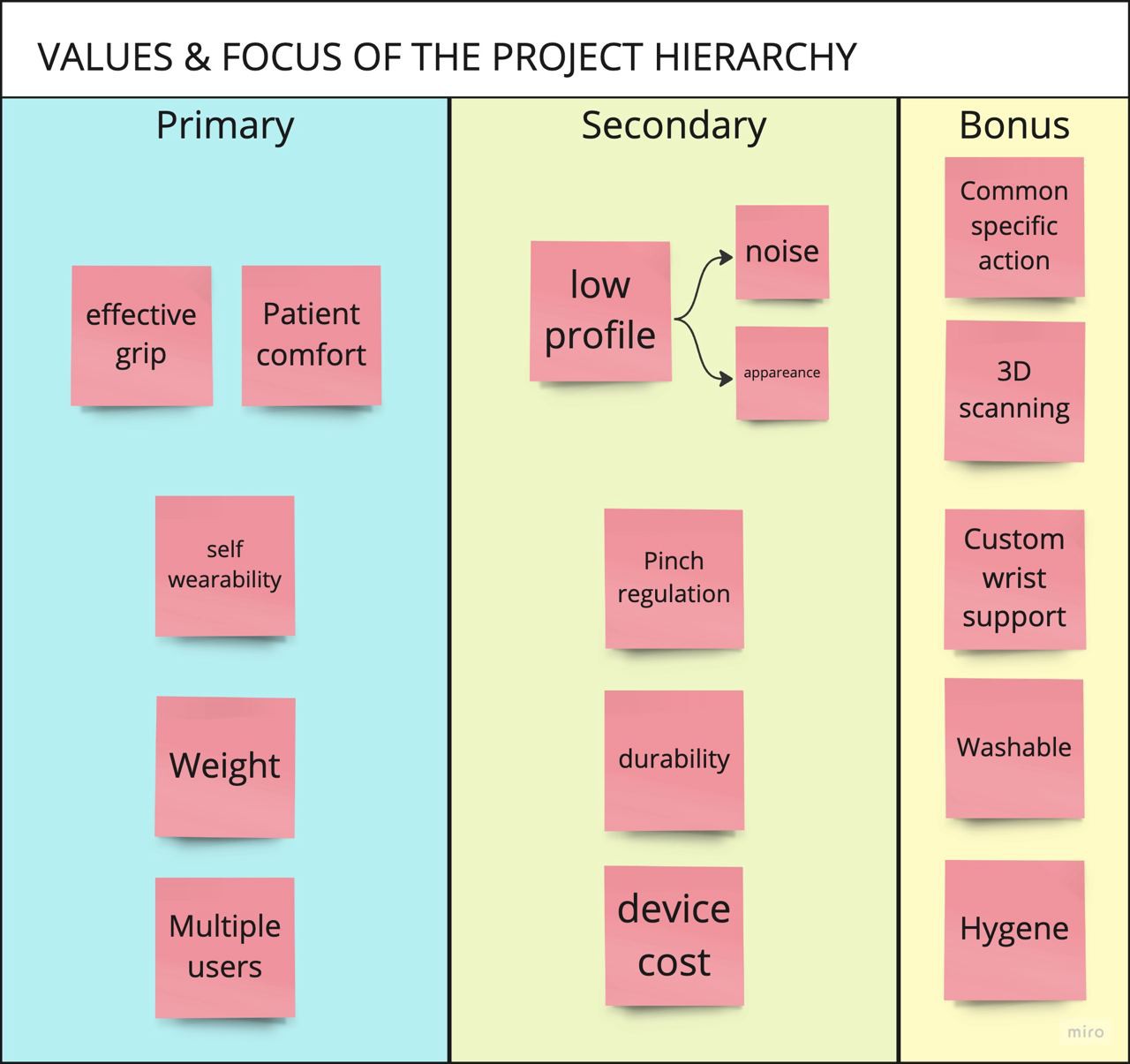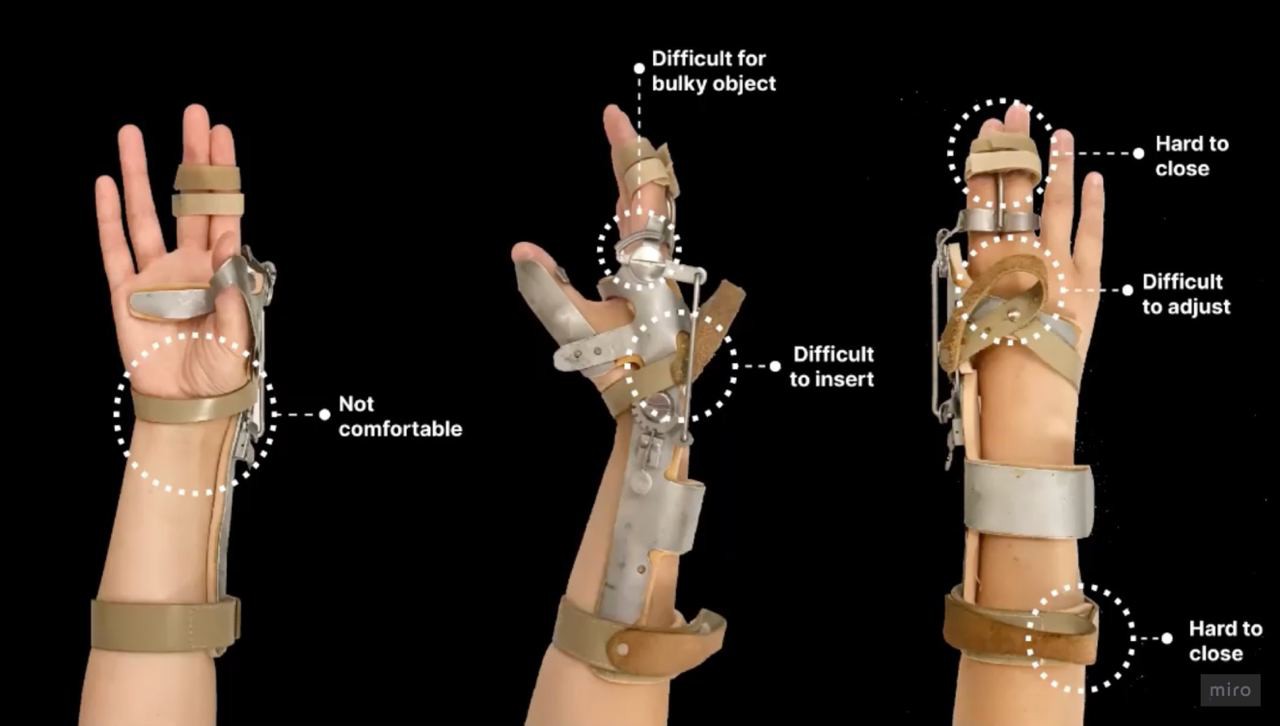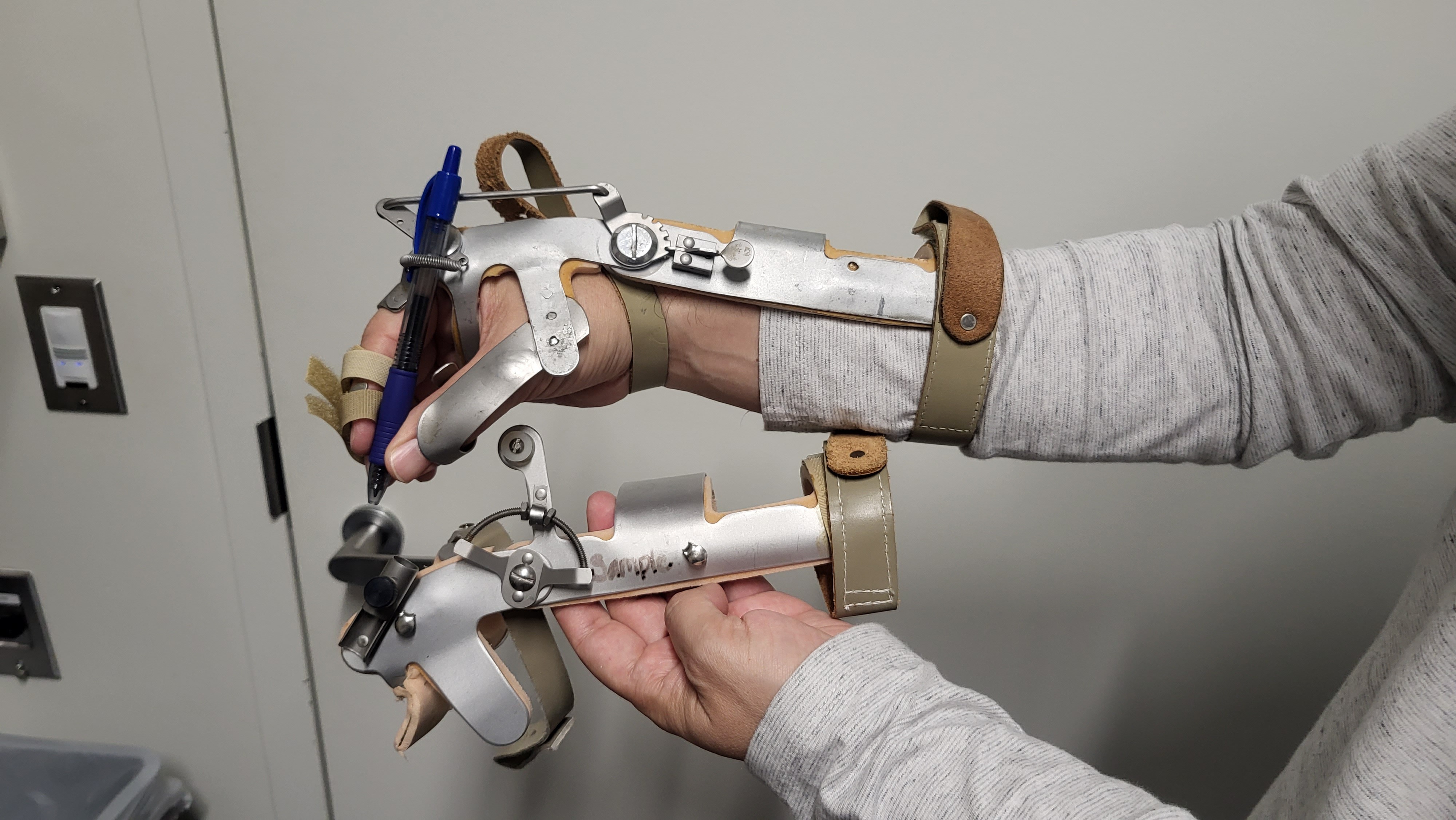-
WEEK 1 - Force Test
08/12/2024 at 08:14 • 0 commentsThe human hand is a marvel of engineering, capable of an incredible range of positions and powerful grips, making it one of the most complex and versatile elements of the body that enables everything from delicate tasks to robust actions.
![Diverse typologies of Grips Diverse typologies of Grips]()
Figure 1. Diverse typologies of Grips There are many different Grips that can be achieved by the hand. In particular:
![Power and Precision Grips Power and Precision Grips]()
Figure 2. Power and Precision Grips Studying in detail the hand anatomy, we closely considered how to test our splint solution within a standardized framework. There are two main tests that we can use to assess the effectiveness of our solution:
- Hand Grip Force Test
- Pinch Test
The golden standard for the Hand Grip Force Test is the Jamar Force Meter.
For the Pinch Test, it is possible to standardize the procedure, as through the use of a Jamar Hydraulich Pinch Gauge Dynamometer or a Spring Gauge to assess:- 2 Point Pinch (2PP): Between the tip of the thumb and the index finger.
- 3 Point Pinch (3PP): Between the pad of the thumb and the pads of the index and middle fingers.
- Lateral Pinch (LP): Between the pad of the thumb and the medial-lateral surface of the index finger.
![Normative Values for Pinch Strength Normative Values for Pinch Strength]()
Figure 3. Nonclamenture used in this study to describe 2-point, 3-point, and lateral pinches.
By employing these standardized tests, we can ensure a comprehensive evaluation of our splint solution's effectiveness, ultimately leading to more reliable and impactful results. -
WEEK 1 - Values Hierarcy
08/12/2024 at 07:14 • 0 commentsLet’s explore the key values and central focus that power this project!
![]()
This project hierarchy outlines the key priorities for developing our orthotic device, tailored specifically to meet the needs of Rancho Los Amigos Rehabilitation Center users. The priorities are categorized into Primary, Secondary, and Bonus focuses, providing a clear roadmap for the development process. This structure emphasizes essential features while also including enhancements to further elevate the user experience.
-
WEEK 1
08/05/2024 at 19:37 • 0 commentsHere we are!
Today, let's dive into how we can make orthotic devices so much better. We took a close look at the hand orthosis and found some key areas we can improve.
![]()
- Comfort Comes First - The wrist strap isn't exactly comfy. Imagine if it were soft and adjustable – it would make a world of difference, right?
- Handling Bulky Objects - This device struggles with big items. What if we add components that can adapt to different shapes and sizes?
- Easy to Put On - Inserting this orthosis is a hassle. Let’s simplify it with quick-release or slip-on features to make life easier.
- Effortless Closure - Closing the device shouldn’t be a challenge. Magnetic clasps or Velcro could make it a breeze.
- Perfect Fit - Adjusting this orthosis is a real pain. Let’s design it so it’s super easy to get the perfect fit every time.
- Better Straps - The straps are tricky to close and adjust. Imagine elastic, user-friendly straps that make everything simpler.
By tackling these issues, we can create orthotic devices that are comfy, easy to use, and highly functional. Let's join forces to make these improvements and enhance lives!
Stay tuned for our next steps, and let's keep this exciting conversation going!
-
The beginnings
07/16/2024 at 22:40 • 0 commentsThis is where it all began: Rancho Los Amigos National Rehabilitation Center (RLANRC).
Andy Lin, the Director of Emerging Tech Lab at RLANRC, explained to me how existing splints, while helpful, affordable, and sturdy, still have areas of improvement.
These splits are for users with spinal cord injuries at the C6-C7 levels with mobility in their wrists.
![]()
![]()
 Supplyframe DesignLab
Supplyframe DesignLab
